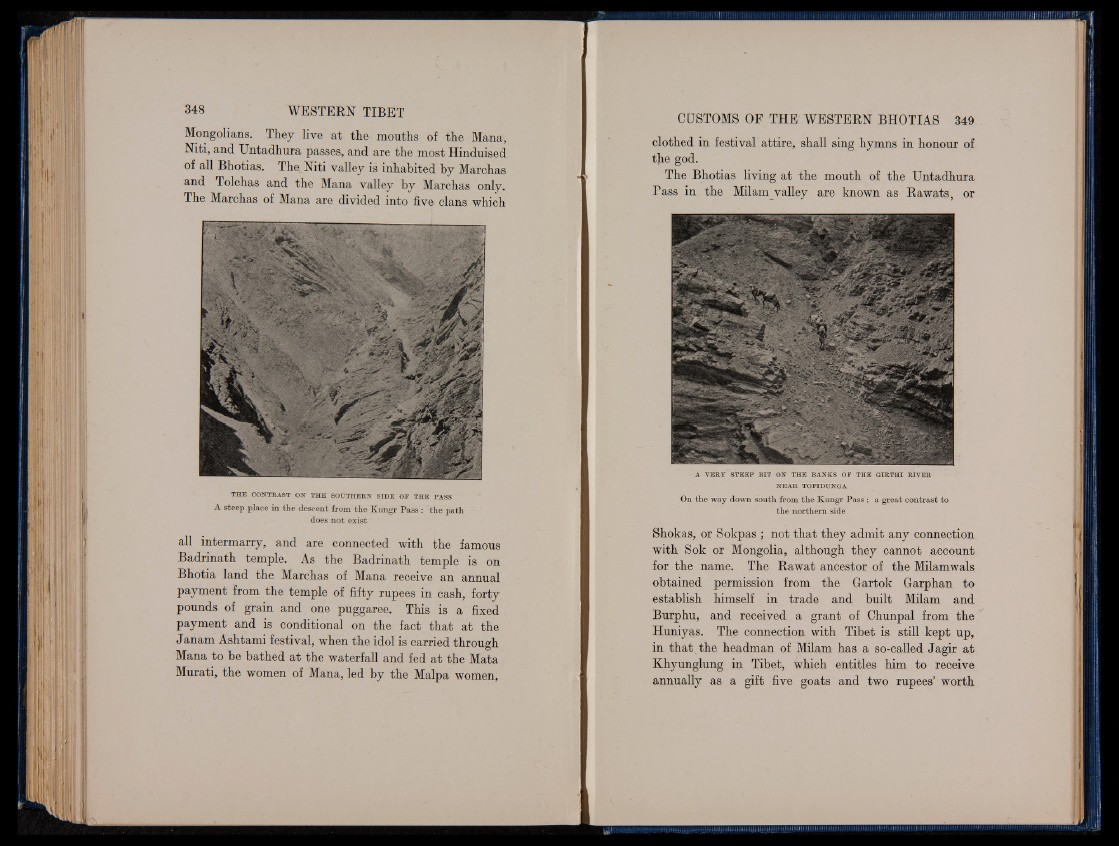
Mongolians. They live at the mouths of the Mana,
Niti, and Untadhura passes, and are the most Hinduised
of all Bhotias. TheNiti valley is inhabited by Marchas
and Tolchas and the Mana valley by Marchas only.
The Marchas of Mana are divided into five clans which
TH E CONTRAST ON TH E SOUTHERN S IDE OF THE PASS
A steep place in the descent from the Kungr Pass : the path
does not exist
all intermarry, and are connected with the famous
Badrinath temple. As the Badnnath temple is on
Bhotia land the Marchas of Mana receive an annual
payment from the temple of fifty rupees in cash, forty
pounds of grain and one puggaree. This is a fixed
payment and is conditional on the fact that at the
Janam Ashtami festival^ when the idol is carried through
Mana to be bathed at the waterfall and fed at the Mata
Murati, the women of Mana, led by the Malpa women,
clothed in festival attire, shall sing hymns in honour of
the god.
The Bhotias living at the mouth of the Untadhura
Pass in the Milam valley are known as Rawats, or
A VERY STE EP BIT ON THE BANKS OF THE GIRTHI RIVER
N EAR TOPIDTJNGA
On the way down south from the Kungr Pass : a great contrast to
the northern side
Shokas, or Sokpas ; not that they admit any connection
with Sok or Mongolia, although they cannot account
for the name. The Rawat ancestor of the Milamwals
obtained permission from the Gartok Garphan to
establish himself in trade and built Milam and
Burphu, and received a grant of Chunpal from the
Huniyas. The connection with Tibet is still kept up,
in that the headman of Milam has a so-called Jagir at
Khyunglung in Tibet, which entitles him to receive
annually as a gift five goats and two rupees’ worth